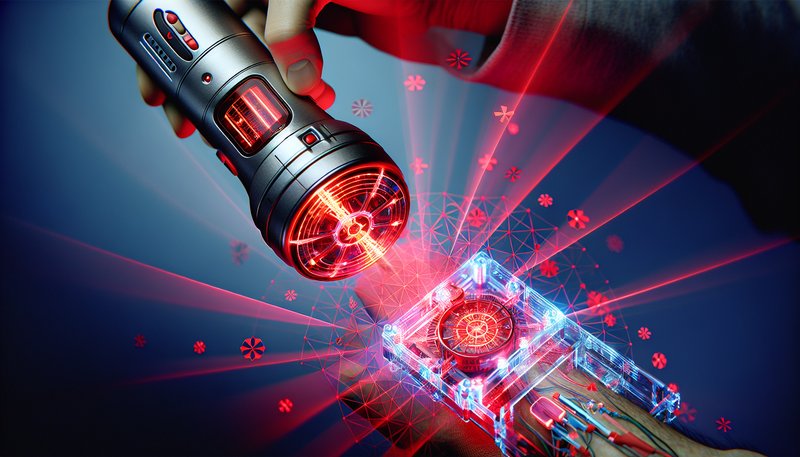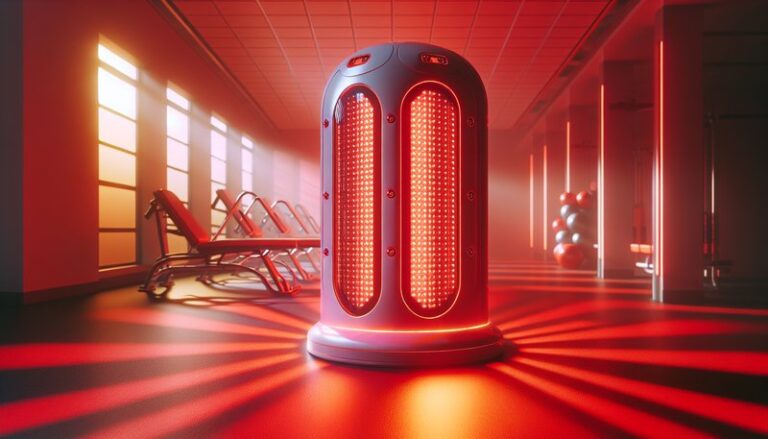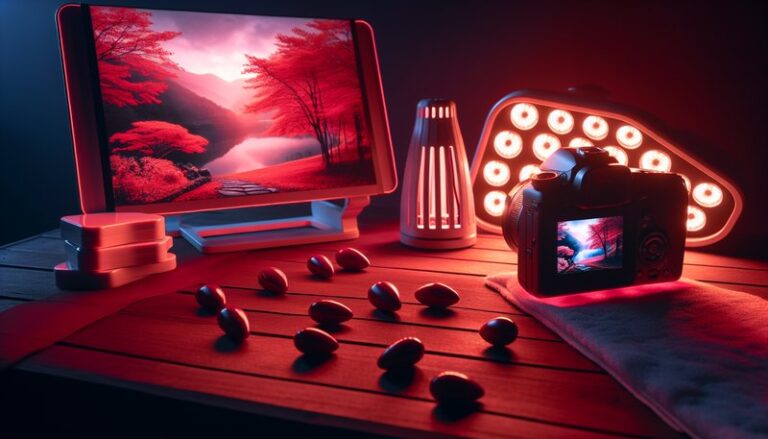Does Red Light Therapy Help Nerve Pain?
Does Red Light Therapy Help Nerve Pain?
Could red light therapy be the answer to alleviating chronic nerve pain?
In recent years, red light therapy (RLT) has gained popularity as a non-invasive method for treating various health conditions, including nerve pain. This article will explore what red light therapy is, its benefits, considerations before trying it, and alternative treatments for nerve pain.
For the full details, see Dangers of Red Light Therapy?
Key Takeaways
- Red light therapy is a non-invasive treatment that uses specific wavelengths of light to promote healing and reduce pain.
- Many users report significant improvements in nerve pain, inflammation, and overall recovery time.
- Considerations such as skin sensitivity and consultation with a healthcare provider are essential before starting any new treatment.
What is Red Light Therapy?
Red light therapy is a therapeutic technique that uses low-level wavelengths of red light to stimulate cellular function. This therapy is based on the principle that light can penetrate the skin and affect cellular health.
Originally developed in the late 20th century, RLT has been studied for its potential to heal wounds, reduce inflammation, and alleviate pain. It works by enhancing electron transport in mitochondria, increasing ATP production, and stimulating the body’s natural healing processes.
Red light therapy devices may come in various forms, including handheld devices, panels, or even full-body light beds. Treatments are typically brief, lasting from a few minutes to about half an hour, depending on the condition being treated.
What are the Benefits of Red Light Therapy?
Red light therapy offers several advantages that may be beneficial for those dealing with nerve pain. Below are some key benefits:
Pain Reduction
Many users have reported a significant decrease in nerve pain after undergoing RLT. The treatment can help lower inflammation and encourage circulation, which can facilitate muscle relaxation and reduce discomfort.
Improved Cellular Function
By boosting ATP production in cells, red light therapy can enhance cellular health. Improved cellular function may lead to faster recovery from injuries and a reduction in chronic pain symptoms, making it especially useful for those with nerve damage.
Non-Invasive Treatment
Unlike surgical options or pharmaceutical interventions, RLT is a non-invasive solution. This aspect can be particularly appealing to individuals seeking to avoid the side effects associated with medications or the risks of surgery.
Enhanced Healing Capabilities
RLT is known to facilitate wound healing and tissue repair. For nerve pain resulting from injuries or surgical procedures, RLT may assist in promoting a faster recovery process and improving overall functionality.
Is it Possible to Use Red Light Therapy for Nerve Pain?
Yes, red light therapy can be effectively used to help manage nerve pain. Many studies and user testimonials suggest that RLT positively influences nerve-related discomfort.
However, it is essential to approach RLT thoughtfully and with an understanding of individual circumstances. The efficacy of the treatment can vary based on factors like type and severity of pain, individual health conditions, and how consistently the therapy is applied.
What are the Advantages of Using Red Light Therapy?
The primary advantages of utilizing RLT for nerve pain include:
Accessibility
RLT devices are increasingly available for home use, making it easier for patients to access therapy without scheduling frequent visits to clinics.
Minimal Side Effects
Most users experience few if any negative side effects when using red light therapy. This safety profile contrasts with many medications that come with a range of potential adverse effects.
Cumulative Benefits
With regular use, users often report progressively improved outcomes, making RLT a viable long-term complementary approach to managing nerve pain.
Cost-Effectiveness
In many cases, RLT can be a more cost-effective solution compared to ongoing medication or repeated medical interventions to manage pain.
What are the Disadvantages of Using Red Light Therapy?
While there are many advantages to using RLT, it is crucial to consider some potential challenges:
Variable Results
Not every individual experiences the same level of efficacy from RLT. Results can depend on various factors, including the type of pain and individual response to the treatment.
Initial Costs
Buying a quality red light therapy device can be a significant upfront investment. Although it may save money in the long term, the initial financial commitment might be a barrier for some.
Need for Consistency
To achieve the best results, RLT treatments need to be consistent. This requirement might be challenging for individuals with busy schedules or those who lack motivation for regular use.
What are the Things to Consider Before Trying Red Light Therapy?
Before starting RLT, several considerations should be taken into account:
Consultation with Healthcare Providers
Discussing with a healthcare provider is vital to determine if RLT is suitable for your specific pain condition. They can provide personalized advice and help manage any underlying health issues.
Learn the secrets in Is Red Light Therapy Good for Eyes?
Device Quality
Since various RLT devices are available, ensure to choose a high-quality product backed by research. Look for devices that emit specific wavelengths that are effective for nerve pain relief.
Treatment Schedule
Creating a consistent treatment schedule is essential for maximizing benefits. Users should consider how often they can realistically commit to therapy sessions.
Sensitivity to Light
Some individuals may experience sensitivity to light treatment. It is important to start with lower exposure times and monitor the body’s response.
What are the Alternatives to Red Light Therapy?
If red light therapy doesn’t sound suitable, there are several alternatives available for managing nerve pain:
Physical Therapy
Engaging in physical therapy can help improve range of motion, strengthen muscles, and reduce nerve pain through tailored exercise programs.
Acupuncture
This traditional Chinese medicine technique involves inserting thin needles at specific points in the body. Many individuals find acupuncture helpful in alleviating chronic pain.
Medication
Some patients may benefit from over-the-counter or prescription medications designed to manage nerve pain, such as anti-inflammatory drugs or nerve pain relievers.
Mind-Body Techniques
Practices such as meditation, yoga, and mindfulness can help improve mental health and, in turn, may alleviate the perception of pain.
Conclusion: Is it Recommended to Use Red Light Therapy?
Red light therapy shows promise as a method for alleviating nerve pain, with benefits ranging from reduced discomfort to enhanced cellular health. However, potential users should weigh the advantages against the possible disadvantages and consider their unique health circumstances. Consulting healthcare providers is recommended for making informed decisions.
Frequently Asked Questions
How long does a red light therapy session last?
Typical sessions last anywhere from a few minutes to half an hour, depending on the specific device and condition being treated.
Is red light therapy safe for everyone?
While RLT is generally safe, it is essential for anyone with specific medical conditions, light sensitivities, or those taking medications that increase sensitivity to discuss it with a healthcare provider beforehand.
How often should I use red light therapy for nerve pain?
For most effective results, users might need to engage in therapy several times a week initially, then evaluate how symptoms respond to adjust frequency as necessary.
Can red light therapy be used in conjunction with other treatments?
Yes, many individuals combine RLT with other treatment modalities, such as medication and physical therapy, to improve outcomes.
Are there any side effects of red light therapy?
Most users experience minimal or no side effects; however, some may have temporary skin sensitivity or irritation. Always monitor your body’s response during sessions.






